Zhu Shu Gui, 朱術桂
King Ning Jing, 南明宁靖王
 Zhu Shu Gui, 朱術桂, (1617 - 21 July 1683), was a senior member of the Ming imperial family. As a privileged member of the Ming society, he would have led a luxurious and most probably carefree life. Unfortunately for him, the Ming dynasty collapsed in 1644 when he was 28 years old and changed the course of his life. Zhu Shu Gui, 朱術桂, (1617 - 21 July 1683), was a senior member of the Ming imperial family. As a privileged member of the Ming society, he would have led a luxurious and most probably carefree life. Unfortunately for him, the Ming dynasty collapsed in 1644 when he was 28 years old and changed the course of his life.
After news of Emperor Chong Zhen’s suicide in the Forbidden City reach the other Ming princes, Zhu You Song, the Prince of Fu, became the new Ming emperor Hong Guang on 19 June 1644. He began a new regime known to historians as the South Ming dynasty, 南明.
Zhu Shu Gui joined the South Ming regime to help revive the dynasty. Despite the Southern Ming’s lofty ambition, the resistance movement was weaken by internal politics and was hardly a threat to the Manchurian invaders.
As the Southern Ming eroded their political capital, a Ming loyalist Zheng Cheng Gong, 郑成功 (also known as Coxinga or Koxinga) ousted the Dutch from Taiwan to establish Kingdom of Tungning, 东宁王国, hoping to use the island as a base to restore the Ming dynasty.
Zhu Shu Gui, Prince of Ning Jing
In 1648, Zhu Shu Gui was sent as King Ning Jing, 宁靖王 to Taiwan. At this time, Zheng Cheng Gong had passed away and succeeded by his son Zheng Jing who constructed a palace in today’s Tainan, for the King and his household.
Thirty five years later, Zheng Jin passed away and Zheng Ke Shuang took his father’s place. Within two years, the Qing forces began a new campaign against Taiwan and the new teenage ruler surrendered. The Qing court later claimed in their political propaganda that this was achieved with the sea goddess, Mazu’s help.
Zheng Ke Shuang’s surrender killed all hopes of restoring the Ming dynasty. Disillusioned by the lost and rather than be captured, the 66 years old King decided to commit suicide. He advised his 5 concubines to flee but the ladies refused and knowing his decision to die, the five ladies hung themselves in their bedroom.
After burying the 5 ladies and distributing his land to farmers, Zhu Shu Gui committed suicide on 21 July 1683. Two eunuchs by his side joined their prince by taking their lives too.
The farmers removed Zhu Shu Gui’s body and buried him with his primary wife, Lady Kuo, in today’s Kaohsiung city. To prevent his tomb or body from being desecrated by the Manchurians, the locals built various decoy tombs.
Memory of the Ming King
Zhu Shu Gui’s tomb is now a historical site while his former palace is now the Tainan Main Matsu Temple and his tablet is enshrined in his former bedroom and also in the temple dedicated to Zheng Cheng Gong. Meanwhile, the tomb of his five concubines and the two eunuchs is also a historical site in Tainan.
Although Zhu Shu Gui did not managed to restore the Ming dynasty and probably was not in a position to do so, his efforts and his courage was admired and respected as evidenced by the continued upkeep of monuments related to his legacy.
Like many other Ming loyalists, including fictional ones such as Princess Chang Ping, who sacrificed for their fallen dynasty, their histories and legacies outlived the Manchurian’s Qing dynasty that was overthrown in 1912.
Related articles:
|
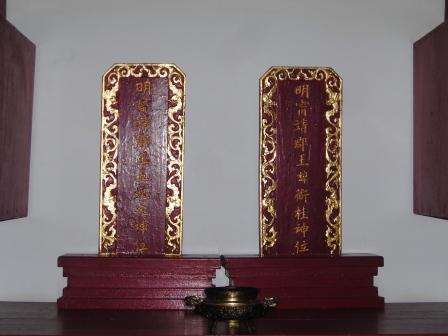
The spiritual tablets of King Ning Jing (R) and
his five concubines (L) in the Zheng Cheng Gong temple

The Palace of Ming king,
now the
Tainan Grand Matsu Temple
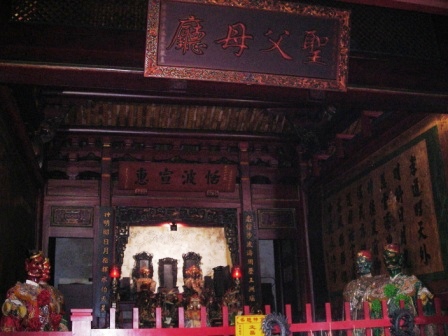
The bedroom of King Ning Jing,
now the
Tainan Grand Matsu Temple
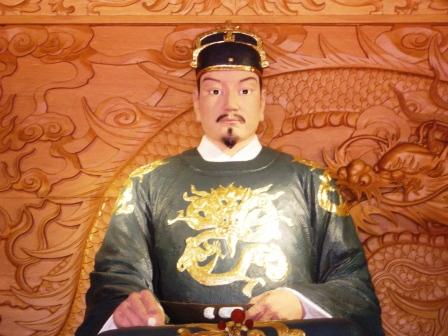
The Ming loyalist Zheng cheng Gon, Koxinga

Zheng Cheng Gong Temple, Tainan
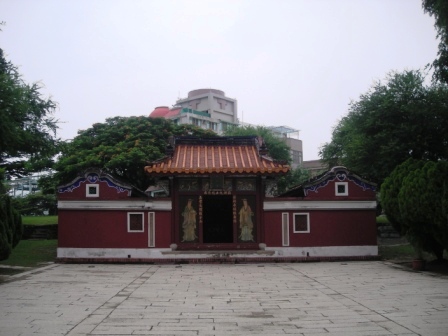
Five Concubines Temple, Tainan
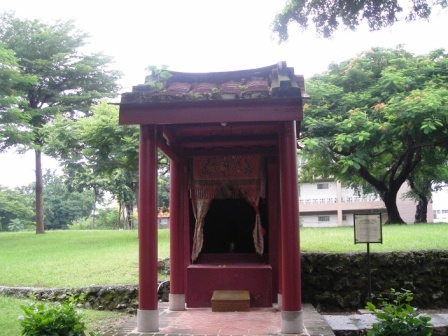
Shrine to King Ning Jing's folllowers
|







